Staring out at me from underneath a side-cocked baseball cap are two bright, blue eyes that are framed by impossibly long, dark lashes. The owner of the impossible eyes has been talking to me at a breakneck speed since we left the small schoolyard. In the space of five minutes, it seems he has only stopped twice to take a breath. I am doing my best to smile and nod in the appropriate places, but the lifting lilt on the end of his sentence implies that he is asking me a question and I have to break the bad news to him: Je ne parle pas francais-I do not speak French. His impossible eyes go cloudy for a minute, but then he snaps right back to prattling along in French. It is not necessary for me to understand to listen, he decides.
Along with his 25 second grade classmates, the talker and I are on our way to a field trip. My friend, who lives in Albertville, had signed up to be the chaperone for the week, and I am the tagalong interloper. From the looks I garner in the schoolyard, I know that they know that I am an outsider. I don’t even need to open my mouth to banish any doubt. As children are want to do, they size me up, and most likely whisper wonderings about the strange American lady. Fortunately, kindness translates to any language and they warm to my smiles and nodding gestures. I also learn later when two boys start into a dirt kicking fight that stern teacher looks also translate into any language. Not surprisingly, I am fluent in the “if you don’t cut that out right now” look that I have practiced many times.
I am delighted to be a part of this typical school outing. I think of it as a bit of cultural anthropology. I am collecting all kinds of data about the similarities and differences in French and American schooling. Of course, the differences are most notable. For starters, the teachers in the school are dressed ultra-casually, as though they are heading to gym rather than a classroom. There is no role check or head count as we set off across town, and when the teacher sets off she never looks back. Onward she proceeds across traffic and fields and the students know to keep up. If she does notice a scuffle behind her and has to stop her march to address the disruption, the tone and volume sound overly harsh to my American ears. Drill sergeant might be the kindest way to describe this teacher.
In this militant manner, we reach the field trip destination in quick time with no one left behind. The purpose of the field trip is a unit study on athleticism, or track and field. We have arrived at what looks to be a typical racing track, but these students are residents of Albertville, home of the 1992 Winter Olympics. They have the privilege of learning to triple jump and relay race in the site of the converted speed skating track.
As an outsider, I remain politely on the outside of the fence as the students drop their bags and enter the field. The athleticism teacher takes charge of the parade of students, and before turning his attention to the teacher; my talker gives me a touching little wave. I take that as a good moment to step away to discover the relics that are left behind from the Olympics in 1992. I had spent the morning touring the Olympic Museum in the center of town, a perfect appetizer that has filled me with a desire to know more about the mark the Olympics made on Albertville.
~Scenes from the Olympic Museum, including avant garde costumes worn during the Opening Ceremony~
The obvious start is the speed skating stadium in which we stand, and although all Olympic stadiums have history, this one is intriguing in a triad of ways. This stadium was the last outdoor speed skating stadium in the Olympics, and in it Bonnie Blair won her speed skating gold metals. History withstanding, I am most interested in the current state of the stadium. After the games, the city converted the track to a typical running track and in is regularly used by students and community members. I climb to the top and center portion of the track to survey the entirety where I find there are few marks that distinguish this stadium from any other city stadium. Other than a single sign in the stands bearing the Olympic rings and the year, the stadium is nondescript.
~Converted Speed Skating Track~
This general feeling of lack of monuments to the game continues around the track and field center. This is largely because a grand stadium in which the Opening and Closing Ceremonies were held is missing from the landscape. Instead of a permanent structure, the stadium was built to be movable, a fact I find more amazing than if the stadium itself was actually present. At the end of the 16 days of games, the stadium was deconstructed and moved in its entirety to Barcelona for the summer games two years later.
~Sign post points the direction and distance to all other Winter Olympic Games~
In monument to the stadium, only the single center support remains. This circus platform, though weathered now, was the centerpiece of the grandest section of the opening ceremony. From the platform, an athletic symphony of ballet performers twisted and flew while suspended from acrobatic elastic bands. Nearby, a signpost points in the direction of all other host cities for the Winter Olympics, including the distance from that point. Even the most recent games in Sochi have been added to the post.
~Acrobats suspended by elastic bands performed in circus style from this center support~
The only other Olympic relic is the figure skating complex and Olympic cauldron just across the street. A topiary display of the standard five Olympic rings marks the field next to the Alpine horn shaped cauldron. The Halle Olympique is currently under renovation, so I was not able to go inside, but just walking around the perimeter was enough to make me feel connected to the events that happened in that building as I viewed them from my living room. I was just at the right age in 1992 to imagine that I could be the next figure skating champion (even though I had never even ice skated), so this was the building in which my idol, Kristi Yamaguchi, won her gold medal.
~The Halle Olympique sits in the shadow of the Alps. Kristi Yamaguchi, Nancy Kerrigan, and Tonya Harding were major players in this arena, although it would be in 1994 that the Kerrigan/Harding drama would commence.~
As I step back into the stadium, young voices are calling in excited exploration below me on the track, but I am focused on finding a seat in the stadium. I choose my seat very carefully, conscious that this may be the only time I ever sit in Olympic venue. There is a hallowed feeling in the arena, even after all these years, as if the seats still reverberate with the hopes and cheers that were housed in the stadium in 1992.
Although more than 20 years past, the spirit of the Olympics-that all-encompassing alliance that we are global citizens of one planet-is still present here in Albertville. Even though I am in a foreign country, a fact that I remember every time I speak, I have still found a piece of my history in this place. My countrymen, Kristi Yamaguchi and Bonnie Blair and many others, made history here. Those moments are a part of my young person’s memories, and like all memories, they had their mark.
Just when I am proudly putting what I think is the exclamation point on the story and patting myself on the back for tying the story together with a neat little bow, I realize I have almost completely missed the truer, more valuable experience in this stadium. I have been so focused on snapping tourist shots of sites that represent Olympics past, but all the while Olympics future is going on right before me. These young schoolchildren could very well be the next Olympic competitors, perhaps spurred on by the inspiration of growing up the shadow of the Alps and playing in the relics of Olympics past. Perhaps when a preternaturally preserved Bob Costas reads the story of the athletes of Olympics future, he will tell of a young man or woman who grew up in Albertville, in the shadow of Olympics past. Perhaps we will hear of how they spent their elementary school years running around the old speed skating track, spurred on to Olympic dreams by the hopes and cheers still housed in that arena.
~Medal Stand Housed in the Olympic Museum in Downtown Albertville~
At the end of the field trip, the kids are scrambling around, teasing one another and making a fuss in trying to rein in their enthusiasm to head back to class. Although the scene is all legs and arms and lunchboxes, I envision a wavy hologram projection of these little bodies in their lean and grownup form, participating in the pomp and ceremony of a medal ceremony. One thing is certain, if there is ever an Olympic medal awarded for conversation, I know exactly who should compete for the gold.
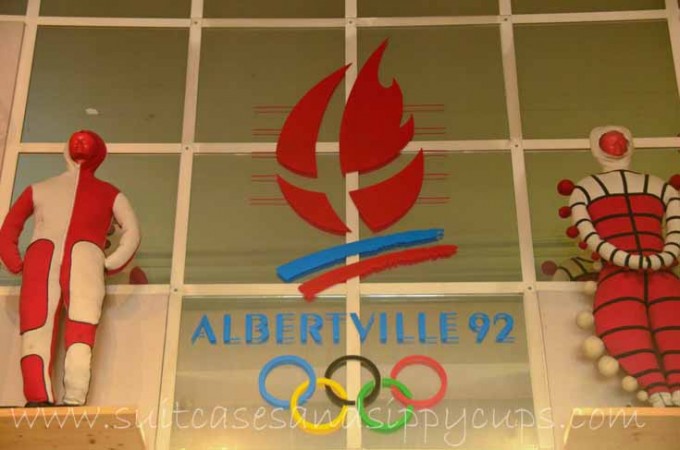

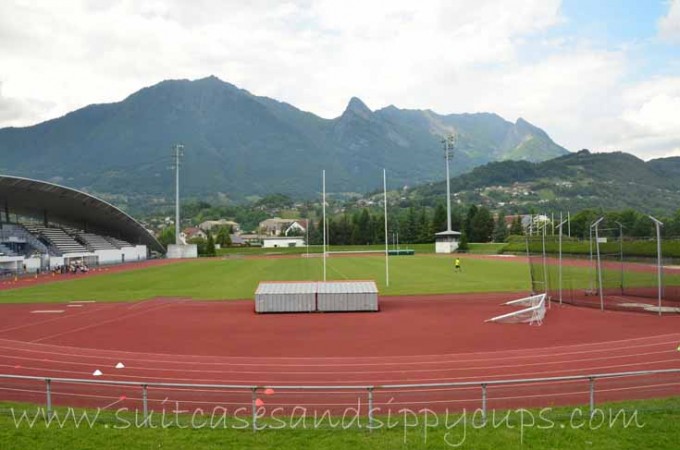
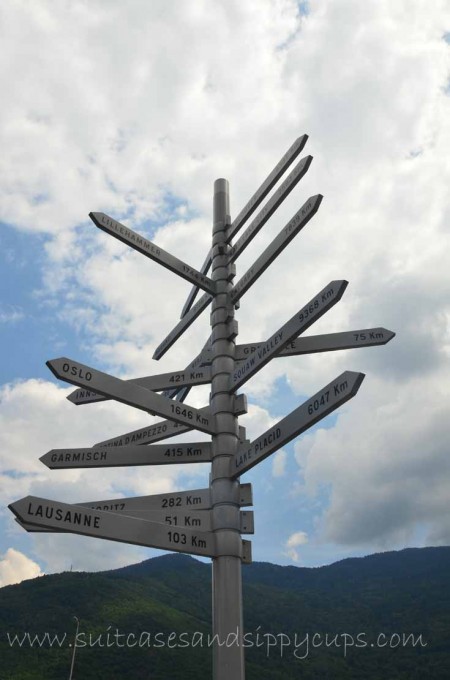
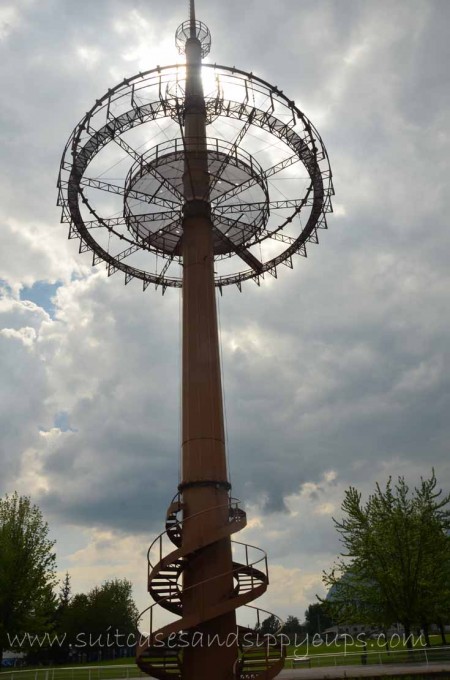
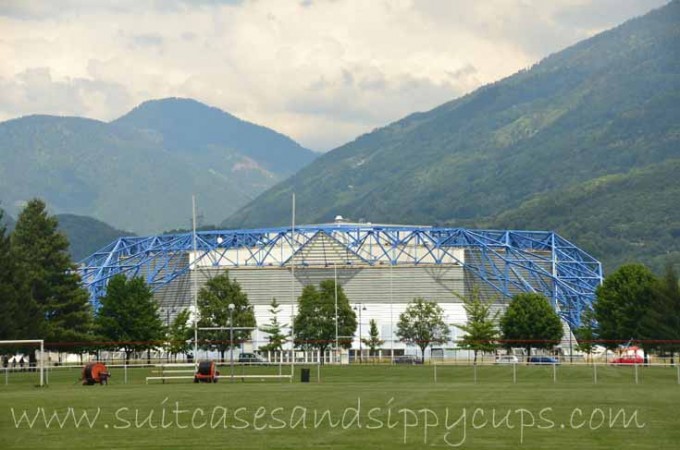
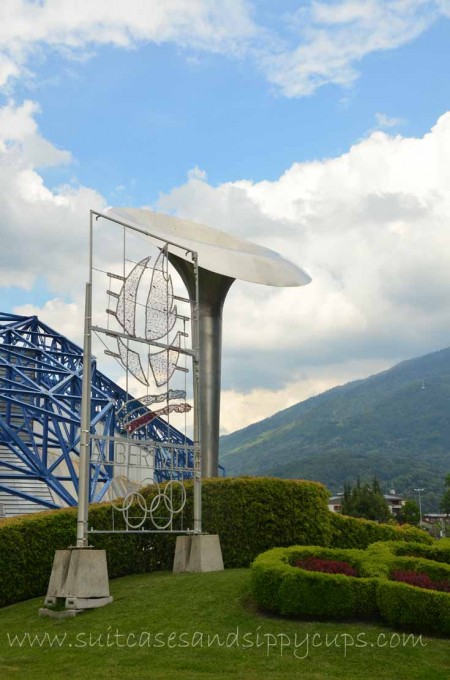
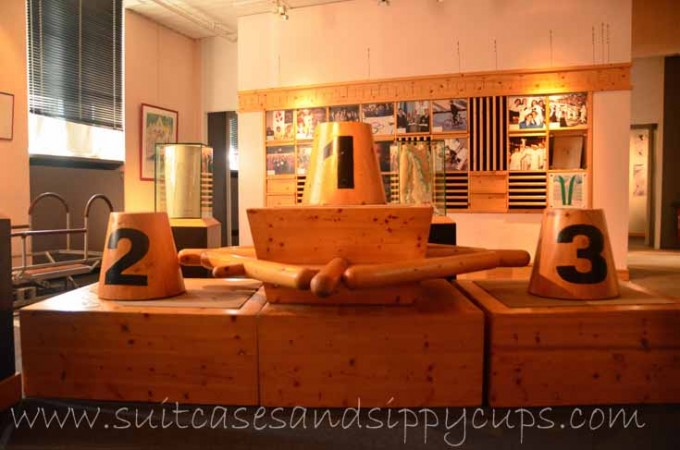
This is fascinating! I always wondered what happens to
all of the terribly expensive creations that the Olympics bring. Glad you got to experience this!!
Gena recently posted…Summer Fun and Eco Friendly Drinkware for Kids
What a cool field trip!! This is really neat to see through the eyes of a fellow American that also idolized the competitors during that Olympic year. It’s really interesting to see how they have changed the look of it since then. It always blows my mind how much money and preparation go into the creation of these venues, so it’s cool to see what they ended up doing with it after the fact!
By the way, those medals for talking? My kids are contenders in that competition, so those kiddos had better up their game. 😉
Jenn L recently posted…Save Money on Textbooks and Help a Child with Campus Book Rentals
What a great experience for you! It’s so cool that you got to see the field trip, and explore this museum. It’s so cool when you can find ways to relate American history to experiences you have in a foreign country.
Arena recently posted…Iced Coffee Milkshakes
Such a cool experience! And wow, a movable stadium? That is amazing! Thank you for sharing your experience and discovery!
Cris @MyFashionJuice recently posted…X and O Smores Recipe
What a neat experience! I love seeing how cities transform all the Olympic venues once the big event is over and it’s neat to see how it is still inspiring others to reach for their dreams!
Mariah Leeson (@Giggles_Galore) recently posted…POPSUGAR Must Have Box Review
What a neat experience. It’s so neat to see the Olympic sites after the fact. I lived in the host city for the 88 Winter Olympics and skated, skiied, and walked on the sites after … there was something so neat about knowing that great athletes had been there before me.
Randi – Dukes and Duchesses recently posted…A Duracell-Powered Storm Kit {and Entertaining Kids During a Storm}
This useful video demonstrates how to get French only websites from anyplace. It’s fast and simple to use applications, that requires no technical knowledge,